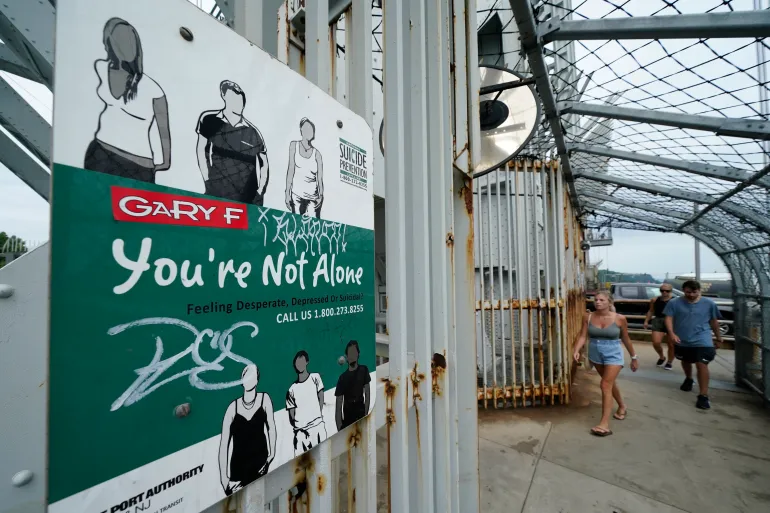Newsmatro

In the midst of National Suicide Prevention Month, the United States is grappling with a growing suicide crisis that underscores the urgent need for increased awareness, better access to mental health care, and reduced stigma surrounding depression and mental illness. Fonda Bryant, a suicide survivor, has become a beacon of hope and change, spreading the message that help is out there.
A Desperate Cry for Help
Fonda Bryant’s journey through depression and her near-fatal suicide attempt is a poignant reminder of the mental health challenges facing many Americans. It all began when she called her aunt to ask if she wanted her shoes, and her aunt’s instinctive question, “Are you gonna kill yourself?” prompted Fonda to admit, “Yes.” Her aunt’s quick action saved her life, but her battle was far from over.
Depression had silently gripped Bryant, a single mother struggling to make ends meet while working full time. She described the experience as feeling like she was “walking in molasses,” with every daily task requiring overwhelming effort. Unfortunately, her story is not unique.
The Complex Relationship Between Suicide and Mental Illness
Depression is often intertwined with suicidal thoughts and actions. Dr. J. John Mann, a professor of translational neuroscience at Columbia University, highlighted that nearly 90% of suicide attempts are linked to a psychiatric diagnosis, with depression being a frequent companion. Despite this connection, the stigma surrounding mental health remains a formidable obstacle to seeking help.
Bryant shared her frustration with the enduring stigma, emphasizing that people with mental health conditions often face discrimination and fear losing their jobs if they reveal their struggles. This stigma frequently manifests in well-meaning but misguided advice, such as recommendations to socialize more or exercise, without acknowledging the seriousness of the underlying psychiatric diagnosis.
Challenging the Stigma and Promoting Suicide Prevention
As a suicide survivor, Fonda Bryant is determined to challenge the stigma and save lives. She recognizes that the prevailing societal attitude towards mental health can deter individuals from seeking assistance. While there has been progress in raising awareness about suicide prevention, statistics reveal that more work needs to be done.
Jill Harkavy-Friedman, senior vice president of research at the American Federation for Suicide Prevention, noted that about “94% of people believe that you can prevent suicide, and over 80% want to do something to help someone.” However, only 30% of people know how to identify signs of someone at risk and what steps to take.
Spotting the Signs and Offering Support
According to Dr. Mann, spotting signs of depression comes down to observing behavioral changes, such as increased quietness, morning difficulties, and declining work or academic performance. The most effective way to intervene and prevent suicide is through direct, empathetic conversations, similar to the one that saved Fonda Bryant’s life.
Harkavy-Friedman emphasized the importance of trust and opening a dialogue with someone you’re concerned about, starting with a simple question like, “How are you doing?” Mann added that face-to-face conversations are essential, as they allow you to assess a person’s well-being based on their response and your knowledge of their usual behavior.
Turning Pain into Action: “You’re Not Alone. Need Help?”
Fonda Bryant transformed her traumatic experiences into a powerful mission to prevent suicide. In 2014, after a layoff left her in despair, she found herself contemplating suicide again. A voice inside her urged her to return to her car, and during the drive home, she focused on the moon, tears streaming down her face.
This life-changing moment inspired Bryant’s campaign to place “You’re Not Alone. Need Help?” signs, along with the suicide prevention hotline, in the vicinity of every parking garage in North Carolina. Her tireless efforts have culminated in the introduction of the Fonda Bryant Suicide Prevention Signage Act in North Carolina, offering hope for more accessible support for those in need.
In Bryant’s words, “When you’re struggling, a lot of times you feel like you’re by yourself, even though you know there’s other people out here. I don’t want a lot of stuff on them. I just want you’re not alone.”
As National Suicide Prevention Month continues, Fonda Bryant’s story serves as a powerful reminder that hope and help are within reach, and the fight against suicide and mental health stigma is a collective effort that must persist.